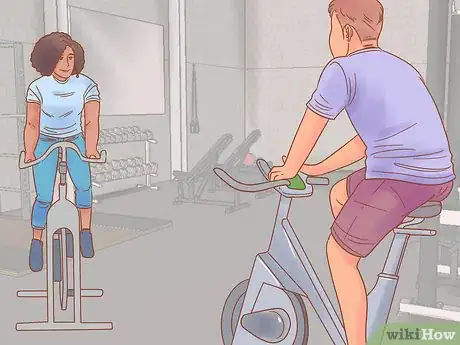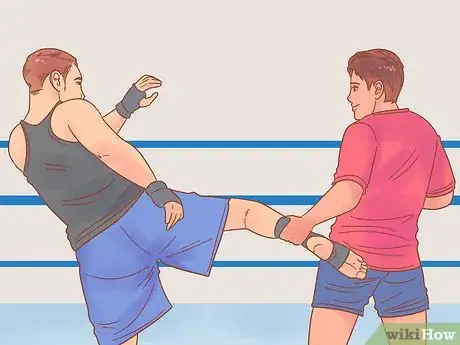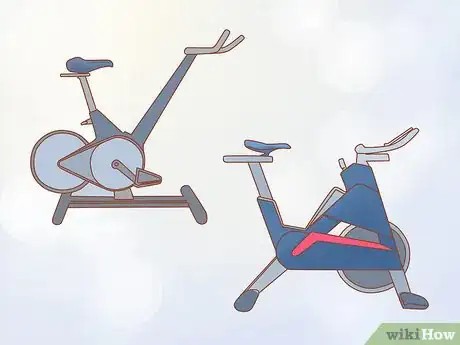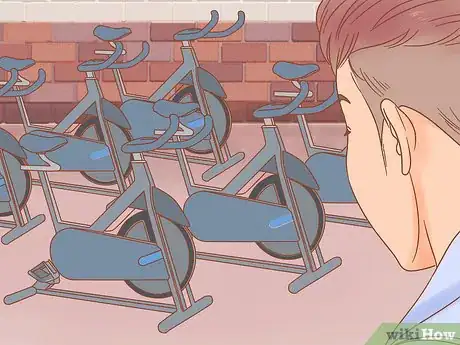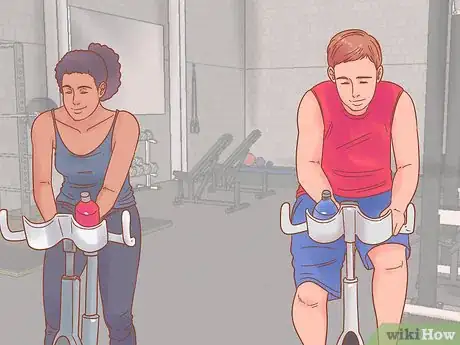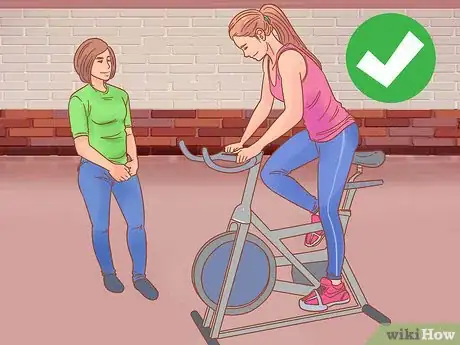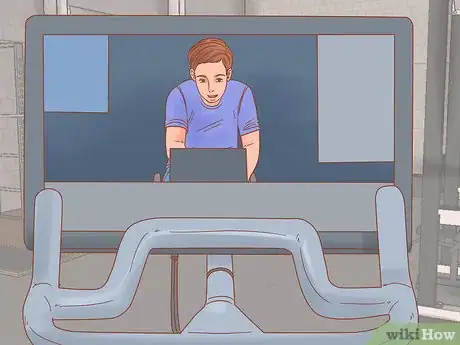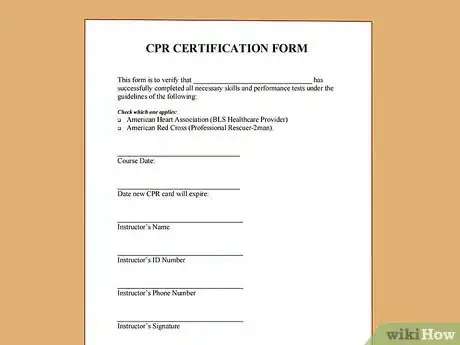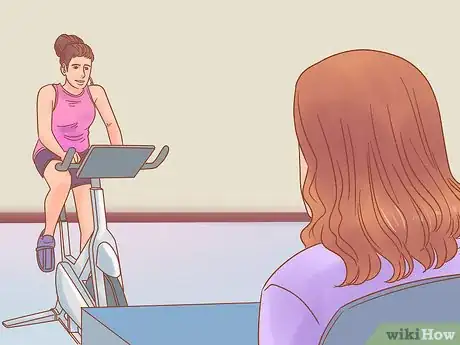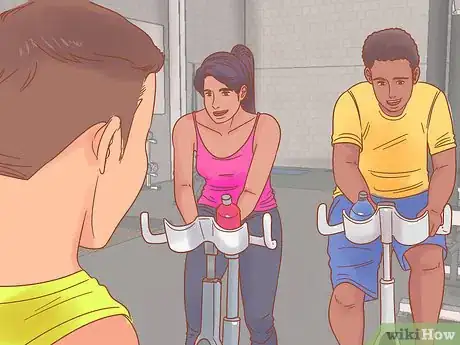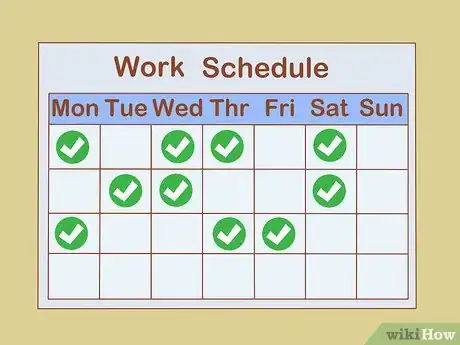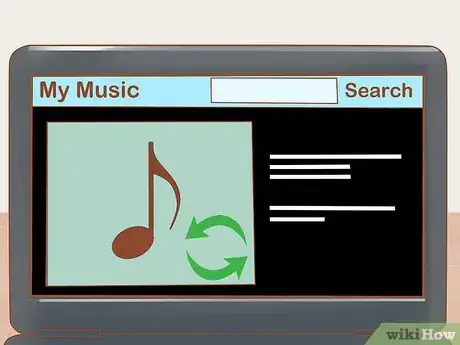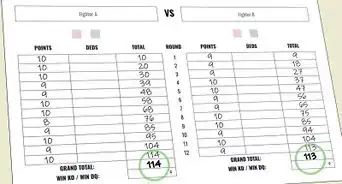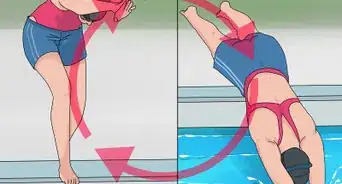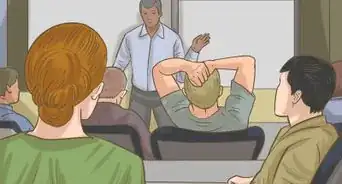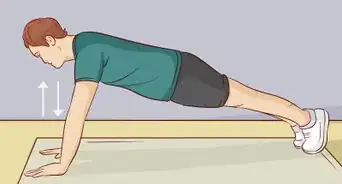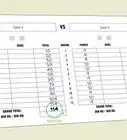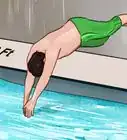This article was co-authored by wikiHow Staff. Our trained team of editors and researchers validate articles for accuracy and comprehensiveness. wikiHow's Content Management Team carefully monitors the work from our editorial staff to ensure that each article is backed by trusted research and meets our high quality standards.
There are 7 references cited in this article, which can be found at the bottom of the page.
This article has been viewed 15,347 times.
Learn more...
So you’ve seen all those Spinning® classes at your gym, or maybe you’ve been attending classes for a while now, and you’ve started imagining how fun it would be to actually teach those classes. You love fitness and music, and you picture a lifestyle where fitness is not only a hobby, but a career as well. As long as you build up a high endurance, familiarize yourself with different types of equipment, and learn all the basics of indoor cycling, it’s a perfectly achievable goal to become a Spinning® instructor. Find an official Spinning® studio by going to the Spinning® website and look under "Find a Class" to look for a studio in your area that you want to work at, complete the necessary Spinning® instructor certification, and audition to get hired!
Steps
Learning the Basics
-
1Take lots of Spinning® classes to learn all of the basics. Watch how different instructors teach the classes you attend and develop your skills and fitness. Every studio and instructor has their own style so it’s important to get lots of experience as a student before you teach.
- Spinning® has a lot of its own terminology, so take notes on all the terms you hear and what they mean. For example, “gear up” means increase the resistance on your bike, and the “resistance knob” is what you use to increase or decrease the resistance on your bike.[1]
- Invest in proper workout clothing before you get serious about Spinning® . Get a good pair of cycling shorts and a sports bra if you need one. Bring a towel to class to wipe your sweat off, and don't forget to bring plenty of water!
-
2Build up your endurance through Spinning® and other fitness classes. Sign up at local gyms for other group fitness classes to add variety to your endurance training. You will also get to see how different types of group fitness instructors teach and motivate their students, which will help you as a future instructor.
- Different group fitness classes focus on different parts of the body. Some may incorporate weights or other equipment, while others focus only on using your own body. A variety of fitness activities will help you raise your heart rate in different ways and build up full-body endurance.
- Examples of other group fitness classes to try include Zumba® or kickboxing.[2]
Advertisement -
3Familiarize yourself with different kinds of exercise equipment and bikes. During your endurance training in Spinning® and other fitness classes, get familiar with all the different gym and fitness equipment that you use. Learn the names and uses of everything that you can, as well as the different models of Spinner® bikes that different studios use, so that you are ready to teach in a variety of studios and class settings.
- Learn how different seat positions on indoor bikes can affect your workout, and how to setup and adjust seat positions on different types of bikes.[3]
Completing Training and Certification Programs
-
1Find an official Spinning studio you love that you want to work at. Keep in mind that every Spinning studio has a different vibe and style. Attend classes at several to find one that you really love and can picture yourself spending a lot of hours teaching at.[4]
- Some studios are more focused on just the intense cycling portion of Spinning®. Think about what kinds of classes you would like to teach and find an appropriate studio.
-
2Try out for and get accepted to the studio’s training program. Every Spinning® studio has a different process for applying to their instructor program. Find out what the try out process is for your chosen studio and complete 1 or more try outs to get accepted into the training program.[5]
- Make sure you have a good base knowledge of Spinning and a high level of endurance before you begin try outs to improve your chances of getting accepted.[6]
- Sometimes a studio might accept you into their training program if you are a regular and they like your style and energy. Build up a rapport with the studio by attending classes regularly and showing off your riding skills.
- The cost of these training programs varies based on location and the studio you have chosen. Expect to spend up to about $325 USD on the certification program.[7]
-
3Complete the studio’s training and certification program. Each studio has their own training regimen. They will teach you about how they want you to structure classes, the bikes they use, what kinds of music they prefer, and all of their other policies and preferences. Attend every class and learn as much as you can from the other instructors.[8]
- Depending on the studio, the training program could last anywhere from 4 weeks to several months. The frequency of the training classes and their duration completely depends on the studio you attend. The training classes could last anywhere from 1-3 hours and could occur just 1 time per week or more frequently. Make sure you have enough availability to complete the entire training program.
- Many boutique studios keep their training programs a secret, so you won’t know exactly what you will be doing until you are actually accepted into the program.
-
4Take an online Spinning® instructor course if you can’t get in a studio course. These courses allow you do them in your own time, and they are cheaper than an in-person course.
- It is not as competitive to get into an online course, and they can cost as little as $70 USD, so they are a good alternative if you can’t get into a training program at a studio or can’t afford it.
-
5Get any additional fitness or first aid certifications that you need. You will also need to get some other basic certifications such as CPR certification in order to become a Spinning® instructor. Check with the studio you want to work at to find out what all of their requirements are.[9]
- In addition to the Spinning® certification, you may also want to take a generic group fitness instructor certification. You can get this by enrolling in a certification program through one of several organizations and passing an exam. In the USA, there are 5 different organizations through which you can get certified, but it is different in every country.
Getting Hired as an Instructor
-
1Audition to be an instructor at your chosen studio. Schedule your audition and come prepared with your best music and your 45-minute routine memorized and practiced. Show your personality and play music you love at your audition to stand apart from the crowd![10]
- Try to forget about anything else going on in your life while you audition for the job. Just focus on the class and the music and let yourself shine.[11]
- Remember to be energetic and motivate your students with positive feedback and words of encouragement. Keep in mind that there could be people of all levels in your class, from beginners to expert spinners.
-
2Practice and perfect your first Spinning® class. See if the studio you want to work at will let you practice your first class in front of some friends or a small group so that you can practice under less pressure. Select your first playlist and practice the routine until you have it down perfectly before you audition to get hired.[12]
- Some studios may include an audition as part of their training program. In this case you should be thinking about your first class throughout the training process and be prepared to audition when the training is over.
- Be open to feedback and suggestions from other spinning instructors or students as you develop your first class.
- A normal Spinning® class is 45 minutes long, and can have as few as 4 and as many as 15 people in it.
- In general, choose fast-paced and upbeat music. Switch up the pace of the music every now and then to allow for periods of rest. Bring your chosen playlist to the studio on a device like your phone that can connect to the studio’s sound system.
-
3Work your way up on the studio’s class schedule. Keep in mind that the studio you want to work at might not hire you on full-time right away. Try to start out as an on-call substitute instructor, or take on the classes at odd hours that other people don’t want to teach to start working your way up.[13]
- Be open to working at different locations or at different hours at first. This will help you work your way up in the studio, as well as provide you will lots of valuable experience in different settings.
- Don’t expect spinning to be your full-time job right away. You may need to keep your day job or have a side hustle for a while until you get more hours as an instructor.[14]
-
4Change up your routine and music for every class. It’s important to keep your class dynamic and have different music every class so that your students don’t get bored. Try to get to know your students to understand what they like and adapt your classes to them.[15]
- Keep attending the Spinning® classes of other instructors to get new ideas and see what other instructors are doing in their classes.
- Take other types of group fitness classes as well. Try to note one positive thing that the instructor did that you can apply to your classes.[16]
- Remember that the actual fitness part of your class is only part of why people will keep coming back. You want people to choose your class because they like your personality, your music, and the way that you teach the class and make them feel.
References
- ↑ https://totalwomenscycling.com/fitness/11-things-know-first-spin-class#9kr0eI8KX1zv13p4.97
- ↑ https://www.health.harvard.edu/heart-health/the-perks-of-group-fitness-classes
- ↑ https://greatist.com/fitness/know-you-go-spin-class
- ↑ https://www.self.com/story/the-intense-cutthroat-world-of-group-cycling-instructor-training
- ↑ https://www.self.com/story/the-intense-cutthroat-world-of-group-cycling-instructor-training
- ↑ https://asweatlife.com/2018/06/want-to-become-an-indoor-cycling-instructor-heres-what-you-need-to-know/
- ↑ https://www.pbfingers.com/spinning-instructor-certification-overview/
- ↑ https://www.self.com/story/the-intense-cutthroat-world-of-group-cycling-instructor-training
- ↑ https://asweatlife.com/2018/06/want-to-become-an-indoor-cycling-instructor-heres-what-you-need-to-know/
- ↑ https://asweatlife.com/2018/06/want-to-become-an-indoor-cycling-instructor-heres-what-you-need-to-know/
- ↑ https://www.washingtonpost.com/express/wp/2015/02/09/steal-this-job-indoor-cycling-instructor/?noredirect=on&utm_term=.4120db9a53fb
- ↑ https://www.self.com/story/the-intense-cutthroat-world-of-group-cycling-instructor-training
- ↑ https://www.self.com/story/the-intense-cutthroat-world-of-group-cycling-instructor-training
- ↑ https://www.washingtonpost.com/express/wp/2015/02/09/steal-this-job-indoor-cycling-instructor/?noredirect=on&utm_term=.4120db9a53fb
- ↑ https://www.washingtonpost.com/express/wp/2015/02/09/steal-this-job-indoor-cycling-instructor/?noredirect=on&utm_term=.4120db9a53fb
- ↑ https://asweatlife.com/2018/06/want-to-become-an-indoor-cycling-instructor-heres-what-you-need-to-know/
